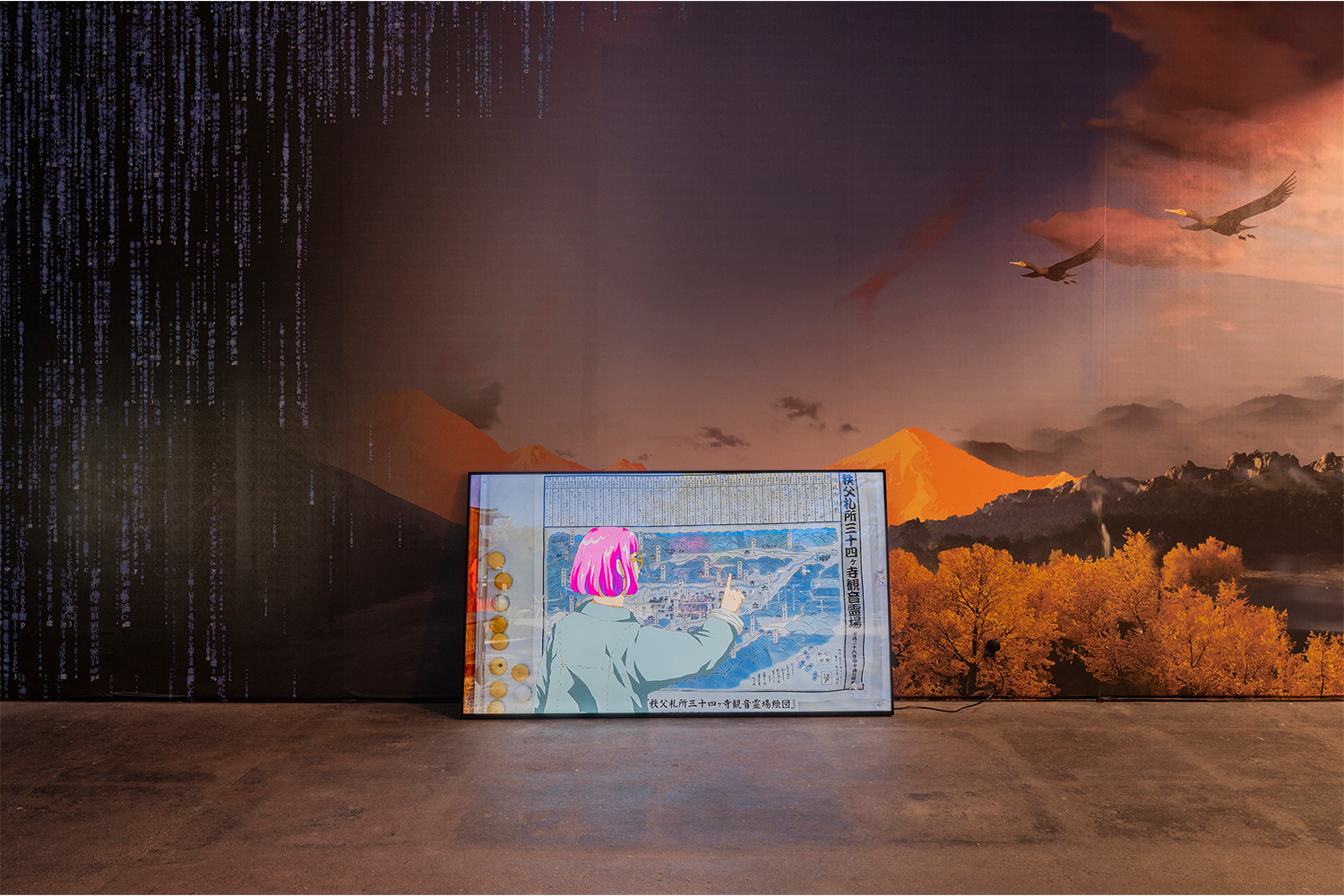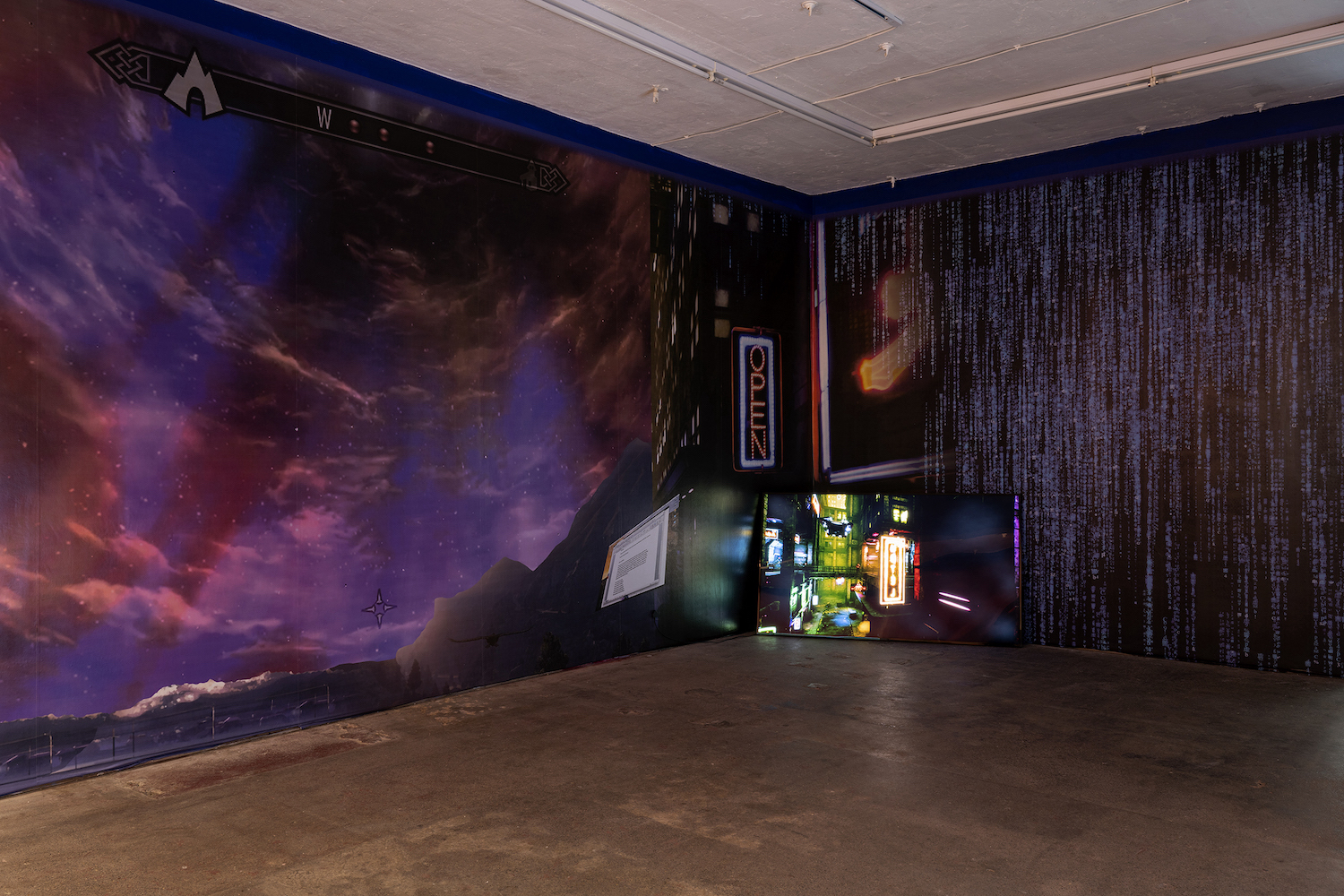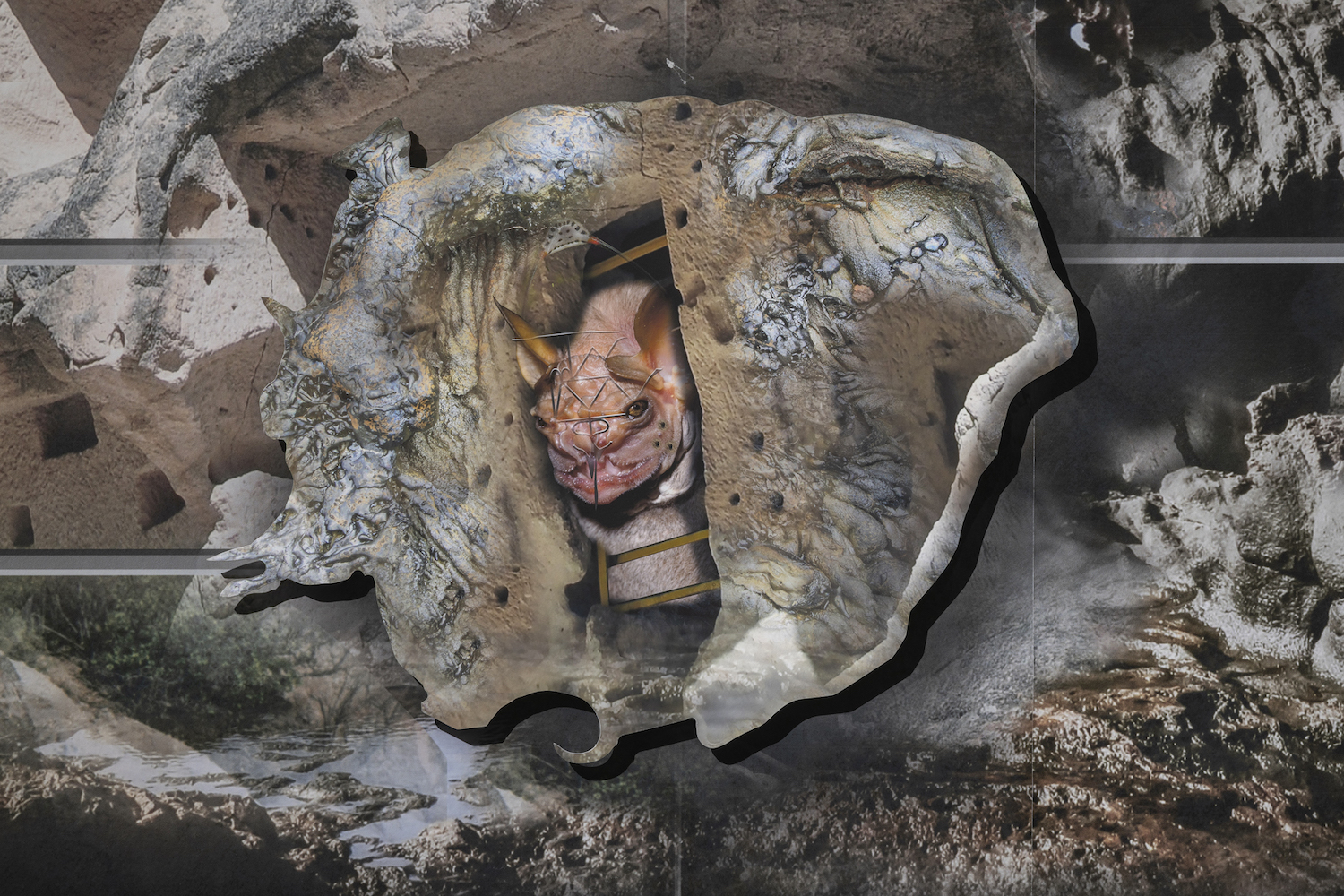“Alternate Presence” is a two person show composed of four films, two by each artist, displayed over a wallpapered landscape by Petra Szemán. Similar concerns and strategies link the two artists’ output, one being their use of a digital version of ‘themselves’ within film. This can range from the effective and commonly used first person narrative voice that as viewers we are familiar with, to generating a digital or animated avatar that then performs on behalf of the artist. This representative, named Yourself in the case of Szemán, or a majestic Cormorant in one of Blandy’s films, can then be filmed within a landscape, whether thats a pre-existing digital environment generated for another purpose or a geographical location captured on camera.
Szemán presents two films from their Monomyth: gaiden cycle. Departure (2018) and Master of Two Worlds (2020) explore the artist’s relationship to their digital avatar, Yourself, as well as the processes involved in the creation of a multi-layered image world. As a self-aware protagonist moving along the frayed edges of fictional and real worlds shaped by narrative traditions, Yourself attempts to navigate landscapes that have become oversaturated with movies and fiction. Starting with the statement “I am both myself and a character that looks like me” the avatar makes a journey, progressing through static landscapes then floating multiplanar images and eventually crossing in and out of the pictorial plane itself.
The narration also implies an interplay of roles between the Character and the Player, describing how visual decisions such as clothing or piercings might be driven by either party, at one moment recounting how their ‘real life body’ had to be changed in order to better represent the latest, levelled-up version of the avatar.
How to Fly (2020) is one of several works by Blandy that employs the form of an online video tutorial to explore ideas around patterns in nature and existence. Each of them begins with the artist giving a step-by- step tutorial explaining how to make a short video about a specific subject, using only the tools available via a computer – through the Internet and video editing software to video games. This very practical tutorial at first playfully undermines an audiences faith in the sanctified process of creation. Within the Grand Theft Auto V cinema mode, one of the tools favoured by Blandy to generate work, he talks the viewer through the process of quickly generating script, roughly capturing a scene finally selecting the seabird as an avatar in order to fly. The work pivots elegantly, having shown the viewer behind the curtain, the ironic detachment is abandoned and the narrator delivers a monologue with unexpected sincerity and meaning. Made in 2020, reflecting the recent period of collective tension, the work offers insight into the spectrum of artifice and sincerity, without having to abandon sincerity itself.
In Androids Dream, Blandy deconstructs the cyberpunk aesthetic popularised by Gibson’s Neuromancer (1984) and Scott’s Blade Runner (1982) which has since proliferated becoming ever more ossified. Formed of multiple simulacra, the work involves Unreal Engine assets and uses scenes from Hideo Kojima’s Snatcher – itself a replay of Blade Runner in video game form – and even deploys an algorithmic likeness of the artist’s own voice. Breaking down the aesthetic form, the film in turn breaks down, repeats, refracts, and goes into reverse.







